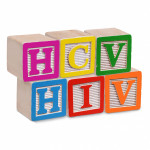The expansion of HIV treatment among those living with HIV and viral hepatitis has not affected end-stage liver disease (ESLD) rates among this population, aidsmap reports. This finding may raise the stakes for those with HIV to cure hepatitis C virus (HCV) and treat hepatitis B virus (HBV) if they have either of the latter two viruses.
Publishing their findings in Clinical Infectious Diseases, researchers studied data on 34,119 people living with HIV who were participants in 12 clinical cohorts in the United States and Canada. The study authors looked at ESLD-related health events that occurred between 1996 and 2010.
In addition to HIV, 19 percent of the study group had HCV, 5 percent had HBV and 2 percent had both forms of viral hepatitis.
The participants were followed for a 129,818 person-years (person-years refers to the cumulative years individuals are followed in a study), during which they experienced 380 ESLD-related health events. Those living with HIV, HBV and HCV had the highest rate of such health events, at 11.57 per 1,000 person-years. For every 1,000 person-years, those with HIV and HBV had an ESLD-related health event rate of 8.72, those with HIV and HCV had a rate of 6.1 and those with just HIV had a rate of 1.27.
Compared with the early years of effective HIV treatment, 1996 to 2000, the modern era of antiretrovirals (ARVs), 2006 to 2010, did not have a statistically significantly different rate of ESLD-related health events among the study population, meaning any apparent difference could have been the result of chance. This is despite the fact that HIV treatment rates increased throughout the study’s follow-up period, reaching 85 percent during the modern era of ARVs. There were no differences in HIV suppression rates between those with or without viral hepatitis.
Just 1 percent of those with hep C were treated for it during the study. During the modern era of HIV treatment, 35 percent of those with HBV were not receiving Viread (tenofovir disoproxil fumarate, or TDF) treatment for that virus.
The researchers concluded treatment for HBV and HCV among those with HIV should be prioritized.
To read the aidsmap article, click here.
To read the study abstract, click here.







Comments
Comments